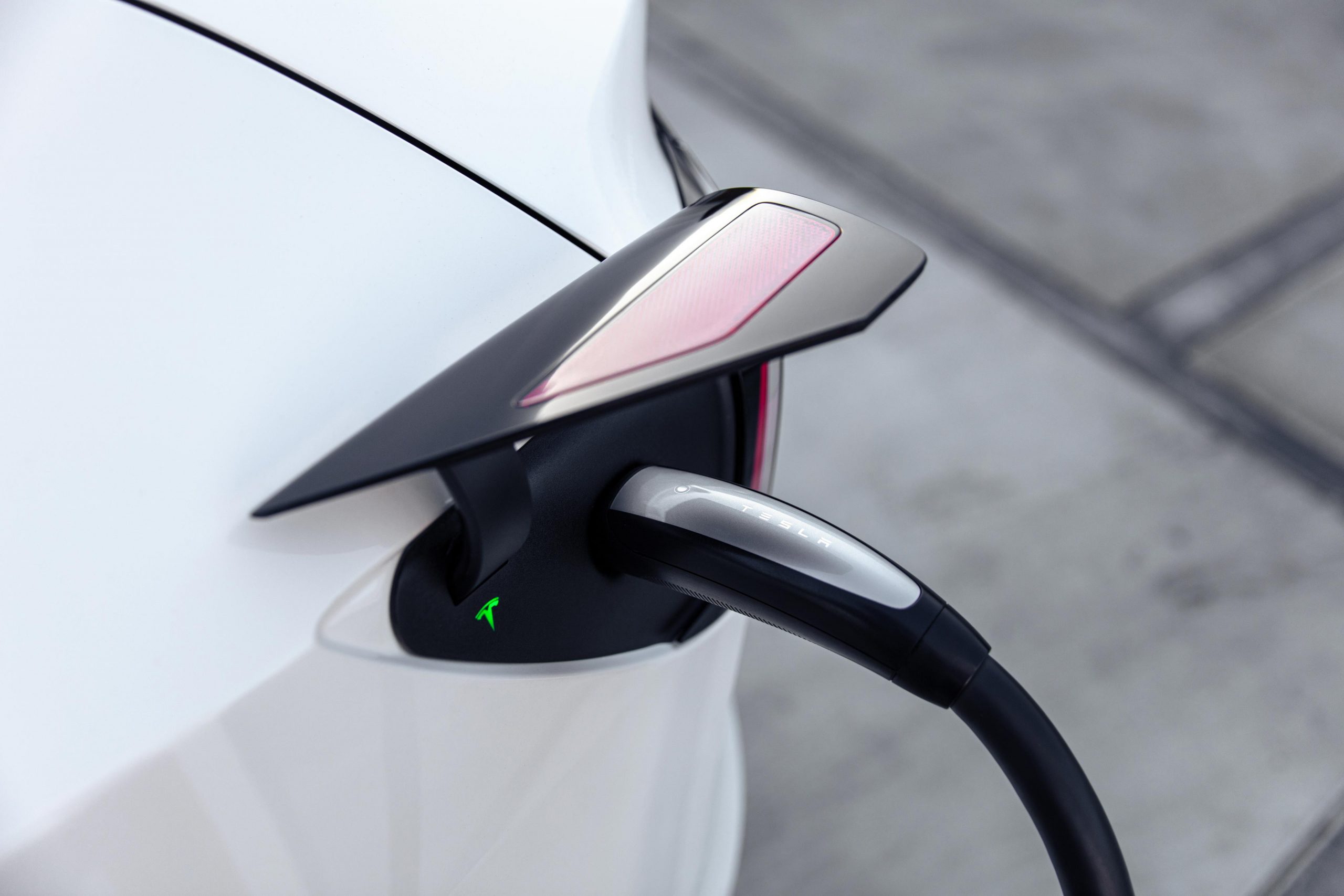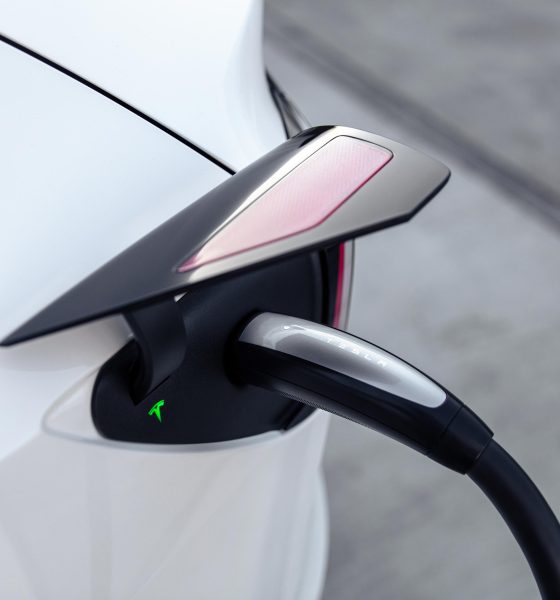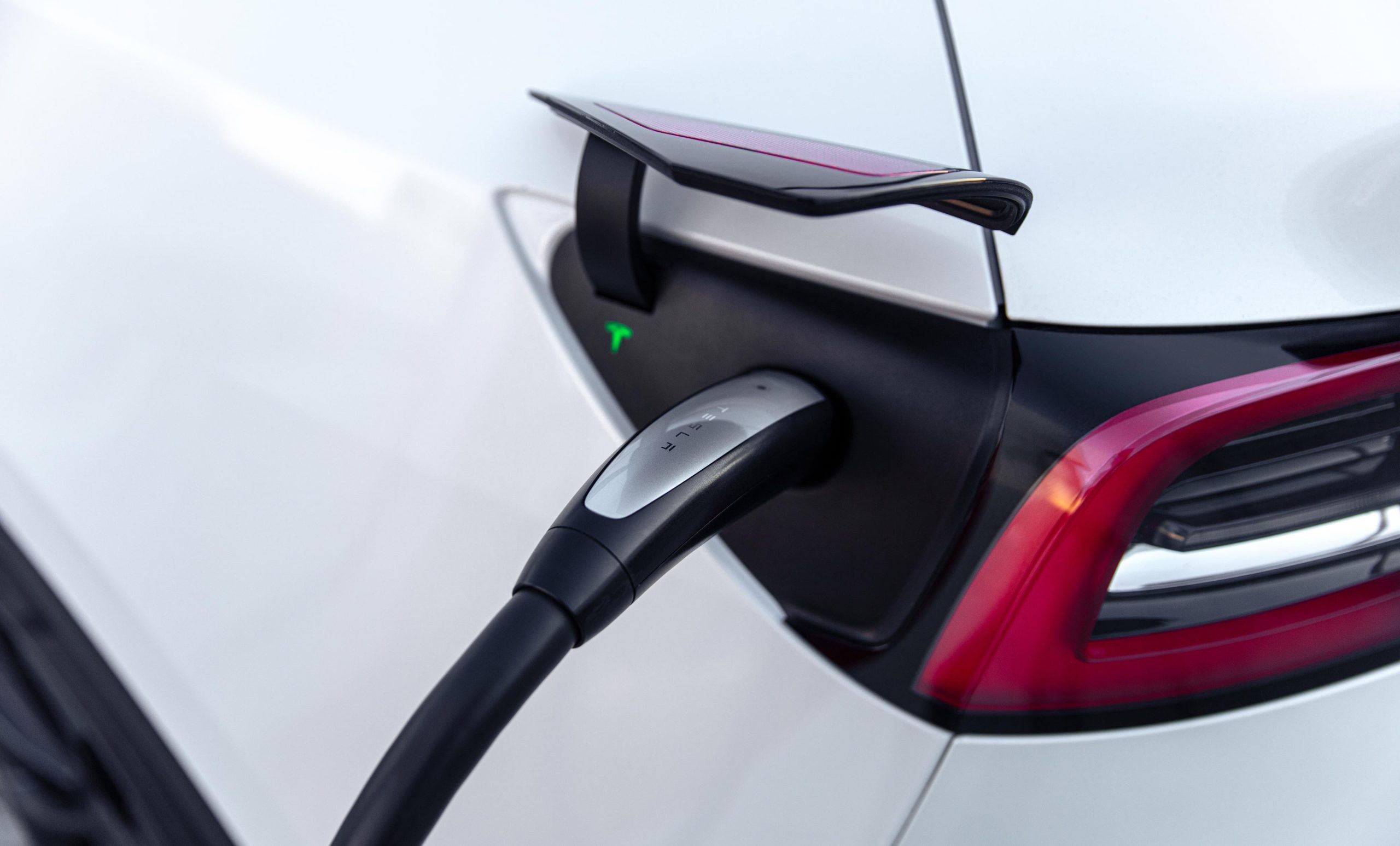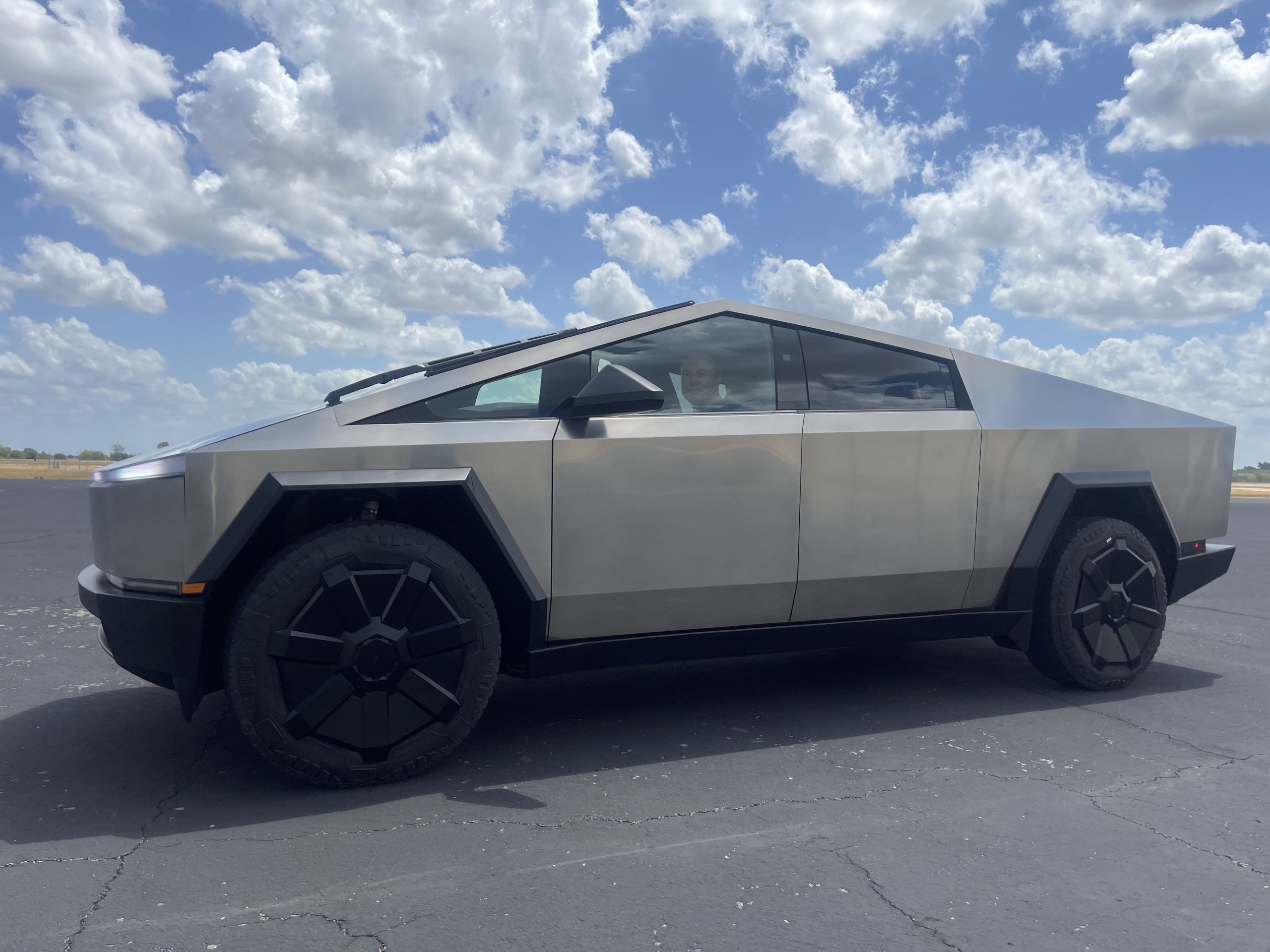

Investor's Corner
Tesla set to access up to $20B in revenues from Supercharger deals, Dan Ives says
Tesla (NASDAQ: TSLA) is set to access up to $20 billion in revenues from its recent Supercharger deals with Ford, General Motors, and various other automakers, Dan Ives of Wedbush said in a note this morning.
Tesla’s Supercharger Network is the most robust and expansive on the planet, and earlier this Summer, it gained massive attention when it struck deals with various OEMs to allow their EVs to access the charging infrastructure starting in Spring 2024.
While Aptera was the first to have access by adopting Tesla’s North American Charging Standard, or NACS, connector, Ford and General Motors followed suit in two announcements that shook the EV industry.
These partnerships then catalyzed various other automakers, including Rivian, Volvo, Polestar, and others, to make the same move. The adoption of NACS is set to bring Tesla major revenue increases through the rest of the decade, according to Wedbush’s Dan Ives, who is a top analyst covering the automaker and the sector as a whole.
Tesla’s NACS Contributing to Revenue
Ives wrote in a note this morning to investors:
“To dive deeper into this sum-of-the-parts valuation, we modeled & projected out Tesla’s supercharger network, taking into account access & revenues from other OEMs using stations across the United States. Ultimately, we estimate that Tesla’s supercharger business will be roughly 3%-6% of total revenues, translating to a $10 billion – $20 billion business by 2030.”
Ives wrote in the note that while the Supercharger Network opening to OEMs is a major part of the Tesla story, it is just that: one part.
(Credit: Tesla)
Strong production figures, a thriving energy business, continuous improvement on the side of the development of Autopilot and Full Self-Driving, an “unmatched battery ecosystem,” and increased production and scale scope are all contributing to a strong financial sheet for Tesla.
“…we believe Tesla is in a prime position to further capitalize on the EV transformation taking place as part of the government’s plan to reduce carbon emissions to zero by 2050,” Ives wrote.
Cybertruck Deliveries ‘Highly Anticipated’
In addition to the strong revenue stream that will come with the opening of Superchargers to OEMs, other Tesla projects are also set to drive profitability, notably the Cybertruck.
“With the delivery numbers representing its flagship model fleet, the much-anticipated Cybertruck remains a hot commodity in the market with the company taking in 1.5 – 1.8 million reservations,” Ives writes.

Elon Musk teases a ‘production candidate’ Cybertruck at Giga Texas
However, recent figures show over 1.9 million reservations held for the Cybertruck currently.
“While preparing for the launch in FY3Q23, the Cybertruck puts TSLA in a great position to capitalize on the growing need for electric pickups with the electric truck market growing at a 31% CAGR through 2032.”
Full Self-Driving and Its Contributions to Profits
Tesla’s Full Self-Driving suite is another major contributor to the automaker’s growing profitability and will drive the automaker’s total addressable market upward. Continuing to refine the suite’s performance through neural network training, the suite, along with Autopilot, has already contributed over 150 million miles of data.
There are more improvements on the way.
“Last week, the company announced its V12 update, an FSD package with end-to-end AI for improved driving smoothness through turns while enhancing both decision-making and detection in TSLA’s journey with the aim of achieving full autonomy this year,” Ives writes.
Ives holds a $350 price target and an “Outperform” rating on Tesla stock.
Disclosure: Joey Klender is a TSLA Shareholder.
I’d love to hear from you! If you have any comments, concerns, or questions, please email me at joey@teslarati.com. You can also reach me on Twitter @KlenderJoey, or if you have news tips, you can email us at tips@teslarati.com.

Investor's Corner
Tesla stock closes at all-time high on heels of Robotaxi progress

Tesla stock (NASDAQ: TSLA) closed at an all-time high on Tuesday, jumping over 3 percent during the day and finishing at $489.88.
The price beats the previous record close, which was $479.86.
Shares have had a crazy year, dipping more than 40 percent from the start of the year. The stock then started to recover once again around late April, when its price started to climb back up from the low $200 level.
This week, Tesla started to climb toward its highest levels ever, as it was revealed on Sunday that the company was testing driverless Robotaxis in Austin. The spike in value pushed the company’s valuation to $1.63 trillion.
Tesla Robotaxi goes driverless as Musk confirms Safety Monitor removal testing
It is the seventh-most valuable company on the market currently, trailing Nvidia, Apple, Alphabet (Google), Microsoft, Amazon, and Meta.
Shares closed up $14.57 today, up over 3 percent.
The stock has gone through a lot this year, as previously mentioned. Shares tumbled in Q1 due to CEO Elon Musk’s involvement with the Department of Government Efficiency (DOGE), which pulled his attention away from his companies and left a major overhang on their valuations.
However, things started to rebound halfway through the year, and as the government started to phase out the $7,500 tax credit, demand spiked as consumers tried to take advantage of it.
Q3 deliveries were the highest in company history, and Tesla responded to the loss of the tax credit with the launch of the Model 3 and Model Y Standard.
Additionally, analysts have announced high expectations this week for the company on Wall Street as Robotaxi continues to be the focus. With autonomy within Tesla’s sights, things are moving in the direction of Robotaxi being a major catalyst for growth on the Street in the coming year.
Elon Musk
Tesla needs to come through on this one Robotaxi metric, analyst says
“We think the key focus from here will be how fast Tesla can scale driverless operations (including if Tesla’s approach to software/hardware allows it to scale significantly faster than competitors, as the company has argued), and on profitability.”

Tesla needs to come through on this one Robotaxi metric, Mark Delaney of Goldman Sachs says.
Tesla is in the process of rolling out its Robotaxi platform to areas outside of Austin and the California Bay Area. It has plans to launch in five additional cities, including Houston, Dallas, Miami, Las Vegas, and Phoenix.
However, the company’s expansion is not what the focus needs to be, according to Delaney. It’s the speed of deployment.
The analyst said:
“We think the key focus from here will be how fast Tesla can scale driverless operations (including if Tesla’s approach to software/hardware allows it to scale significantly faster than competitors, as the company has argued), and on profitability.”
Profitability will come as the Robotaxi fleet expands. Making that money will be dependent on when Tesla can initiate rides in more areas, giving more customers access to the program.
There are some additional things that the company needs to make happen ahead of the major Robotaxi expansion, one of those things is launching driverless rides in Austin, the first city in which it launched the program.
This week, Tesla started testing driverless Robotaxi rides in Austin, as two different Model Y units were spotted with no occupants, a huge step in the company’s plans for the ride-sharing platform.
Tesla Robotaxi goes driverless as Musk confirms Safety Monitor removal testing
CEO Elon Musk has been hoping to remove Safety Monitors from Robotaxis in Austin for several months, first mentioning the plan to have them out by the end of 2025 in September. He confirmed on Sunday that Tesla had officially removed vehicle occupants and started testing truly unsupervised rides.
Although Safety Monitors in Austin have been sitting in the passenger’s seat, they have still had the ability to override things in case of an emergency. After all, the ultimate goal was safety and avoiding any accidents or injuries.
Goldman Sachs reiterated its ‘Neutral’ rating and its $400 price target. Delaney said, “Tesla is making progress with its autonomous technology,” and recent developments make it evident that this is true.
Investor's Corner
Tesla gets bold Robotaxi prediction from Wall Street firm
Last week, Andrew Percoco took over Tesla analysis for Morgan Stanley from Adam Jonas, who covered the stock for years. Percoco seems to be less optimistic and bullish on Tesla shares, while still being fair and balanced in his analysis.

Tesla (NASDAQ: TSLA) received a bold Robotaxi prediction from Morgan Stanley, which anticipates a dramatic increase in the size of the company’s autonomous ride-hailing suite in the coming years.
Last week, Andrew Percoco took over Tesla analysis for Morgan Stanley from Adam Jonas, who covered the stock for years. Percoco seems to be less optimistic and bullish on Tesla shares, while still being fair and balanced in his analysis.
Percoco dug into the Robotaxi fleet and its expansion in the coming years in his latest note, released on Tuesday. The firm expects Tesla to increase the Robotaxi fleet size to 1,000 vehicles in 2026. However, that’s small-scale compared to what they expect from Tesla in a decade.
Tesla expands Robotaxi app access once again, this time on a global scale
By 2035, Morgan Stanley believes there will be one million Robotaxis on the road across multiple cities, a major jump and a considerable fleet size. We assume this means the fleet of vehicles Tesla will operate internally, and not including passenger-owned vehicles that could be added through software updates.
He also listed three specific catalysts that investors should pay attention to, as these will represent the company being on track to achieve its Robotaxi dreams:
- Opening Robotaxi to the public without a Safety Monitor. Timing is unclear, but it appears that Tesla is getting closer by the day.
- Improvement in safety metrics without the Safety Monitor. Tesla’s ability to improve its safety metrics as it scales miles driven without the Safety Monitor is imperative as it looks to scale in new states and cities in 2026.
- Cybercab start of production, targeted for April 2026. Tesla’s Cybercab is a purpose-built vehicle (no steering wheel or pedals, only two seats) that is expected to be produced through its state-of-the-art unboxed manufacturing process, offering further cost reductions and thus accelerating adoption over time.
Robotaxi stands to be one of Tesla’s most significant revenue contributors, especially as the company plans to continue expanding its ride-hailing service across the world in the coming years.
Its current deployment strategy is controlled and conservative to avoid any drastic and potentially program-ruining incidents.
So far, the program, which is active in Austin and the California Bay Area, has been widely successful.








